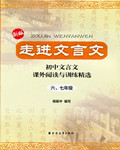题目内容
Madrid, capital of Spain, is a city with large numbers of historic sites resting in the shadows of modern skyscrapers.
This city of over 3, 23 million people, up from 2,88 million in 2000, is proud of Western Europe’s royal palace, considered by many to be Madrid’s most beautiful building. Inside the Royal Palace 2,800 rooms are decorated with museum-quality furniture and artwork.
The internationally loved Prado Museum is the largest and most impressive art gallery in Spain. Opened in 1819, it is filled with works of art that include the world’s most comprehensive collection of Spanish paintings.
Spain is famous for its delicious ham, and there’s no better place to try it than at Museo del Jamón, which has five branches around the city. Hanging from the ceiling of each branch are dozens of hams of different types and flavors. Taste them in the bar.
Madrid had some of Europe’s best shopping. For 500 years, shoppers have gathered to a large outdoor flea market (跳蚤市场) known as the Rastro, where they find everything from antiques (古董) to CDs.
Get a great view of the city from Teleferico de Madrid. This cable car (缆车) takes you on a 2.5kilometer trip 40 meters above the Manzanares River and Casa de Campo park. For a refreshing choice, relax beside the swimming pool on the roof of the Emperador Hotel. Enjoy delicious desserts and drinks while viewing the city, or take a dip in the cool water.
No trip to Madrid is complete without seeing a performance of Spain’s famous art form, flamenco. Every day, flamenco performers sing, dance or play the guitar in small cafes and grand theaters alike.
1.What can readers learn about Madrid from this article?
A. How it develops its attractions.
B. How it will continue to improve
C. How its population has changed
D. How its lovely parks came into being
2.Which of the following should you not visit if you suffer from a fear of heights?
A. The Royal Palace
B. The Prado Museum
C. The Museo del Jamón
D. The Teleferico de Madrid
3.What can we learn about the Rastro from the article?
A. The fascinating story behind its creation
B. The variety of goods on offer there
C. The very low entrance fee that it charges
D. The convenience of its downtown location
4.In which magazine would this article most likely appear?
A. Best Relaxation Destination
B. Modern Country Living
C. Foreign Affairs Quarterly
D. Fashion News
 走进文言文系列答案
走进文言文系列答案

